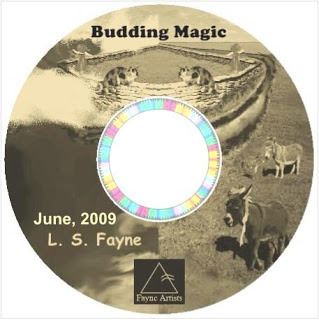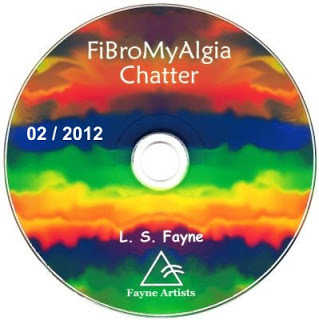Protecting Your Work!
In the U.S. a copyright is assumed at the creation of a work. While this is true, it’s quite another thing to prove it in court. You can bet that if someone has stolen your work, and is challenging you for it, they have prepared material to help them get away with the theft.
Have you prepared your work in such a way that you can prove the work was yours before it was theirs? It’s not as hard as it may seem.
It doesn't matter whether you self publish your work, or your work is accepted by a publisher. Your copyright belongs to you and needs to be protected. Having your copyright does not make your document, “published”.
Step 1: Dating Material
I create a file on all the computers I use with just my name. Everything from then on goes into that file. It’s easier to protect one file than hundreds of files. When I start a new project, I create a new file within my, “Linda” file. It makes it a lot easier when I move my work to a new computer. I realized this when I only had use of a shared computer.
Date everything. All writers know that before our project is finished, we write and write, and then we write some more. No matter what medium you use to build your work, whether it is on little notes of paper, spiral notebooks, or computer files, save it in a way that shows date stamps. Yes, a spiral notebook can be faked. But think about your accumulation of notes. It is very unlikely that someone who has stolen your work, would take the time and energy to “fake” an in-depth paper trail of the creation of a work; from start to finish. These people tend to be greedy, untalented, and lazy. Otherwise, they would have their own work to publish.
I rarely write things out in paper. So I make sure I save my files with a different number sequence when I finish at the end of a writing day. Example: Book called Shadows. I would save it each day with Shadows-01.doc, Shadows-02.doc, sequencing up each day.
It’s staggering just how much material we collect before we are finished with our books.
Step 2: Legal Copyright
As soon as the first draft is complete, and before it goes to a beta reader, editor, or even your best friend; fill out the form for a government copyright. A government copyright is nothing more than a time stamp on the work in its current condition. There is no other purpose of a government copyright than to prove the work at that moment in time.
It doesn’t matter that it’s not finished, or that it has typos and needs editing. It doesn’t even matter if the plot twists, or even if the name of the book changes. It is not going to anyone who cares about such things. It is only an opportunity to protect all your hard work from theft. For the copyright, I save my book in a PDF.
Read the instructions at the office carefully, and oh yes, turn your pop-up blocker off. The system uses pop-ups to move you along their system. If the system does ruin your entry, and sometimes it does, you may have to start a new entry. You should be able to delete the old one later. Their system is arcade, be prepared to become frustrated.
In the U.S. we can upload our work electronically. It costs $35. The time stamp starts as soon as the work is received in the office, which is almost immediate. I recommend uploading it electronically, instead of sending a copy through the post. You cannot do both.
The first time I sent a work to the copyright office, I did it by post. Because of the Anthrax threats, it went through a decontamination process, never to be seen again. It took a year before I was able to resubmit it electronically.
Even if the copy does finally get received by the correct people, it may take 6 months to a year before being processed. Paper copies have to be hand scanned into the system by an employee. Even electronic copies sent on disks take manual handling to be processed.Once the work is received, and the system says received, it will take months before the paper confirmation is sent to the writer. The delay doesn’t matter. The time stamp has already been established.
The Poor Man’s Copyright: I did this for a song. This method is to simply send the work to yourself through the post in a tamper free envelope; an envelop which will be destroyed if someone tries to pry it open. The copyright relies on the postal date stamp across the stamp area. I still have my song in such. The problem is the date stamp is no longer legible. Since I was a child when I posted it, it was near impossible for me to not mess with it. I had to hide it away. It’s amazing how hard it was to leave it alone. I guess a lab today could prove the date, but who would go to that expense to prove the copyright? Not for my little song.
Step 3: Backing Up Your Work.
 As you work, save your files to a different system than your computer. Back it up every week or month. It can be on a flash drive, hard disk, or removable hard drive. Never, ever use a public storage system. It doesn't matter what their claims are with regards to security. Things happen. This will also protect your work if something happens to your computer.
As you work, save your files to a different system than your computer. Back it up every week or month. It can be on a flash drive, hard disk, or removable hard drive. Never, ever use a public storage system. It doesn't matter what their claims are with regards to security. Things happen. This will also protect your work if something happens to your computer.When you are finished with the project, create a permanent disk with all your work saved on it. Save all your artwork, notes, and revisions. If you have it, save it. Store the disk in a secure place. I have all mine in a small, fire-proof safe. Each book has its own set of disks. This preserves the paper trail which was so meticulously prepared.

U.S. Copyright Office
Good Luck and Happy Writing!!!

Published on August 07, 2012 07:08
No comments have been added yet.
L.S. Fayne's Blog
- L.S. Fayne's profile
- 18 followers
L.S. Fayne isn't a Goodreads Author
(yet),
but they
do have a blog,
so here are some recent posts imported from
their feed.



